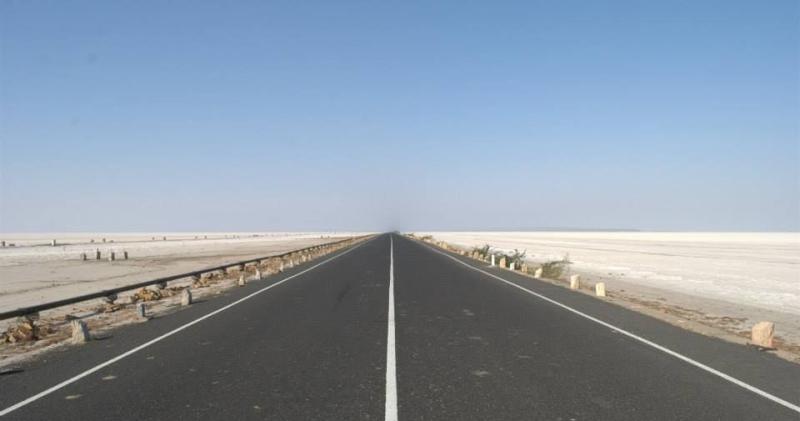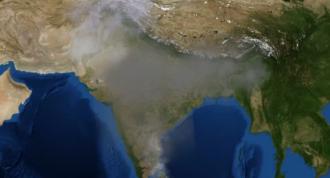
Road trips and long drives are adventures that many would love. For some, this may be a way to escape the city’s busy life, and the pollution. Congestion and pollution in city roads are a well-known fact. But how about highways? In India, highways constitute only 1.7% of the whole road network, but carry 40% of the total road traffic. So, how much of hazardous pollutants are you exposed to when you are on your next long road trip? A new study by researchers at the Indian Institute of Technology (IIT), Kharagpur, may have an answer.
“Most traffic pollution studies are focused on cities, but what about people traveling more than 300 to 400 kilometers on a national highway? There are only 6 to 7 papers on this across the world, and in India, the number is zero”, says Dr. Aditya Kumar Patra from the Department of Mining at IIT, Kharagpur, talking about the motivation behind this study. “Now that more people have begun to travel on highways for both, personal and professional reasons, it has become important to conduct such a study,” he adds.
In this study, Dr. Patra and his team have explored the extent of pollutants that passengers were exposed to, in different travel modes, along a national highway in India. “We examined exposure levels to PM2.5 and carbon monoxide (CO) on three modes of travel – public bus without AC (air conditioning), non-AC car and AC car,” describes Dr. Patra.
PM2.5 refers to tiny atmospheric particulate matter (PM) that have a diameter of up to 2.5 micrometers. In addition to the exhaust of a vehicle, brakes and wearing out of the tyre and resuspension of road dust can result in PM2.5 emissions. Thanks to their small size, they can be easily inhaled and penetrate the respiratory and circulatory systems. Long-term exposure to PM2.5 can cause asthma, lung cancer and cardiovascular disorders. CO is a toxic gas a high concentrate of which can lead to unconsciousness and death.
The researchers gathered data arduously by traveling for 200 kilometers up and down a busy national highway for two months, using all three modes of transport under study. They carried instruments such as the EVM-7 and the EPAM-5000 to measure particulate matter and carbon monoxide concentration in the air.
The researchers found that the documented exposure to PM2.5 exceeded the permissible limit of 25 micrograms per cubic metre, specified by the World Health Organization (WHO). It was the highest for passengers of a non-AC car (85.41 ± 61.85 μg m−3), followed by the bus (75.08 ± 55.39 μg m−3), and was the lowest for passengers in an AC car (54.43 ± 34.09 μg m−3). On the other hand, CO exposures were highest in an AC car (1.81 ± 1.3 parts per million), followed by the non-AC car (1.34 ± 1.03 ppm), and lowest in the bus (0.80 ± 0.61 ppm). These exposure levels increase due to road repairs and road extensions along the highway.
“In a car, you can be exposed to pollution such as CO due to emission leakage from the engine into the cabin. This is commonly called self-pollution. In an AC car, the CO cannot find a way to leave the car because the car’s glasses are closed. This is why CO exposure is highest in an AC car,” explains Dr. Patra, “However, because PM2.5 can only enter the car from the outside, AC car passengers are protected from PM2.5 exposure. This same logic can explain the findings regarding the non-AC car as well”, he adds. The reason behind passengers on a bus being exposed to lesser PM2.5 compared to a non-AC car is because of the height of the seats from the road/tail pipe level that allows more dilution of exhaust emission before it enters inside the bus, say the author.
The study also revealed a contrast in the pollution exposure levels when traveling on a highway outside and inside a city. “Most highways now-a-days bypass the cities. While you are traveling in a highway, for the part of the highway that is outside the city, the overall exposure to pollutants is less compared to the overall exposure in the part of the highway that is inside the city”, highlights Dr. Patra. “There are one and a half time more pollutants in vehicles traveling on a highway through the city compared to on a highway outside the city. To avoid these high levels of exposure, I recommend always trying to bypass the city when traveling on a highway”, he suggests.
The research team hopes to continue their work on similar lines by exploring how the speed of a vehicle and passenger occupancy numbers can influence pollution exposure levels on highways. “Our research can help people become more aware about choosing the most optimal mode of travel. Also, we hope that this research can help frame better pollution control strategies for highways in the future,” concludes Dr. Patra.






